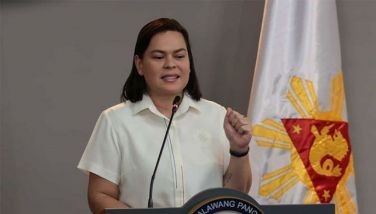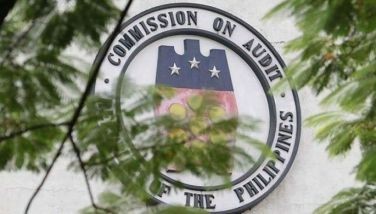DepEd: Only one computer for every 25,000 public school pupils
October 28, 2006 | 12:00am
Education Secretary Jesli Lapus has admitted that the department can only provide one personal computer for 25,000 public elementary school pupils.
"At the elementary level, computer penetration is negligible. Latest available DepEd (Department of Education) estimates place computer penetration at one computer for every 25,000 pupils and one for every 728 school teachers," Lapus lamented in his speech at a conference called the "Philippine Education Roadmap: Building the 21st Century School System," held recently at the Hotel Philippine Plaza in Pasay City.
"Our high school penetration is at one computer for every 111 secondary (high school) school students, and one for every three secondary school teachers," Lapus also said.
He said that while more secondary schools now have computers, student-to-computer and teacher-to-computer ratios remain extremely poor.
Lapus said another problem is the limited number and variety of subject-specific educational software available in public schools.
Computer software in schools consist mostly of office software or productivity tools and the educational software that are available tend to be limited to English, Science and Mathematics.
There are few educational software for music and arts classes, and for subject areas that require local content in the local language such as Social Studies and Filipino, he said.
At the same time, there is no specific standard curriculum and guidelines for integrating computers into the subject areas, said Lapus.
Although the current curriculum advocates the innovative use of Information and Communications Technology (ICTs) to make learning more interactive, interdisciplinary, collaborative and authentic, there is no technology-enhanced curriculum available, he said.
Insofar as the public school teachers are concerned, despite the fact that they are critical to the success of technology integration in the classroom, training opportunities in ICT-enhanced teaching are generally limited.
He said that in the Foundation for IT Education and Development (FITED) survey, 58 percent of public schools reported that less than half of their teaching staff have undergone computer-related training, while 12 percent reported that their teachers have had no computer-related training at all. For those that have undergone ICT training, the nature of the training and its effectiveness is unclear, he said.
"All these challenges is indicative of the urgency of integrating ICT in basic education if we are to bring our schools — and our children — into the 21st century," Lapus said.
Lapus said the country should improve the framework for the 21st century skills that will include ICT literacy, learning and thinking skills and life skills, in addition to the traditional core subject content will have to be framed to eventually evolve into the fulcrum for fundamental re-design of the educational system.
"At the elementary level, computer penetration is negligible. Latest available DepEd (Department of Education) estimates place computer penetration at one computer for every 25,000 pupils and one for every 728 school teachers," Lapus lamented in his speech at a conference called the "Philippine Education Roadmap: Building the 21st Century School System," held recently at the Hotel Philippine Plaza in Pasay City.
"Our high school penetration is at one computer for every 111 secondary (high school) school students, and one for every three secondary school teachers," Lapus also said.
He said that while more secondary schools now have computers, student-to-computer and teacher-to-computer ratios remain extremely poor.
Lapus said another problem is the limited number and variety of subject-specific educational software available in public schools.
Computer software in schools consist mostly of office software or productivity tools and the educational software that are available tend to be limited to English, Science and Mathematics.
There are few educational software for music and arts classes, and for subject areas that require local content in the local language such as Social Studies and Filipino, he said.
At the same time, there is no specific standard curriculum and guidelines for integrating computers into the subject areas, said Lapus.
Although the current curriculum advocates the innovative use of Information and Communications Technology (ICTs) to make learning more interactive, interdisciplinary, collaborative and authentic, there is no technology-enhanced curriculum available, he said.
Insofar as the public school teachers are concerned, despite the fact that they are critical to the success of technology integration in the classroom, training opportunities in ICT-enhanced teaching are generally limited.
He said that in the Foundation for IT Education and Development (FITED) survey, 58 percent of public schools reported that less than half of their teaching staff have undergone computer-related training, while 12 percent reported that their teachers have had no computer-related training at all. For those that have undergone ICT training, the nature of the training and its effectiveness is unclear, he said.
"All these challenges is indicative of the urgency of integrating ICT in basic education if we are to bring our schools — and our children — into the 21st century," Lapus said.
Lapus said the country should improve the framework for the 21st century skills that will include ICT literacy, learning and thinking skills and life skills, in addition to the traditional core subject content will have to be framed to eventually evolve into the fulcrum for fundamental re-design of the educational system.
BrandSpace Articles
<
>
- Latest
- Trending
Trending
Latest
Trending
Latest
Recommended































